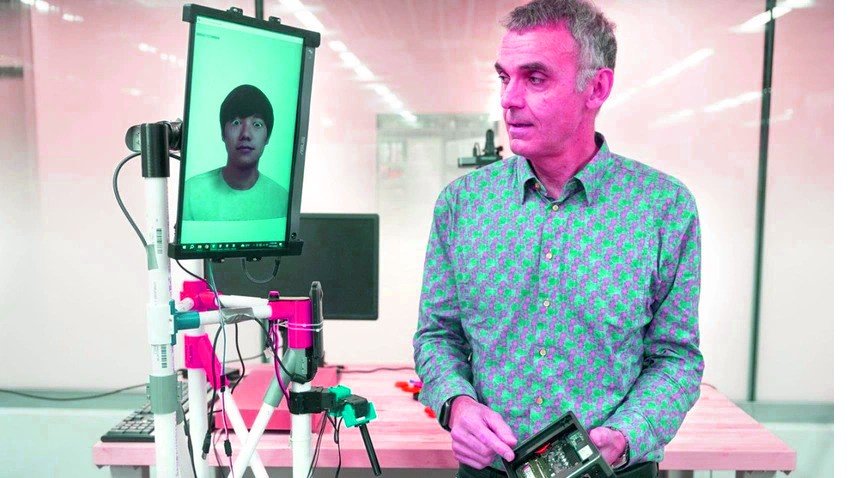In a remarkable advancement at the intersection of robotics and virtual reality, researchers have achieved a groundbreaking feat by creating a robot that emulates the movements and interactions of a VR user. This innovative development promises to revolutionize the way robots navigate and interact with their surroundings, bringing us one step closer to a future where machines seamlessly blend with the virtual and physical worlds.
VRoxy is an advanced telepresence robot that responds automatically and in real-time to a user’s movements and gestures in virtual reality (VR). Researchers from Cornell and Brown Universities have collaborated to develop this robot.
Through the use of virtual reality, this technology makes it possible to promote seamless collaboration between a remote user located in a constrained place, such as an office, and teammates located in a larger environment.
Researchers at the Cornell Ann S. Bowers College of Computing and Information Science have invented a new technology called VRoxy, which represents the most recent advancement in remote robotic embodiment.
Read More: Study Suggests Virtual Reality Can Help Cancer Patients Relax
All About VRoxy(Researchers make a robot that can move like a VR user)

A PhD student in the field of information science named Mose Sakashita stressed the benefits of virtual reality in permitting a variety of movement strategies that are often employed in VR games.
Because of this functionality, remote users are given the ability to occupy a smaller amount of physical area while yet being able to actively participate in activities taking place in a more expansive distant environment.
Sakashita is the primary author of the study that will be presented at the ACM Symposium on User Interface Software and Technology. The title of the study is “VRoxy: Wide-Area Collaboration From an Office Using a VR-Driven Robotic Proxy,” and the research team conducted it.
According to the findings of the research team, the responsiveness in real-time offered by VRoxy is an essential feature for both local and remote partners. A distant teammate working in a cramped workplace can take part in group activities that are taking place in a substantially larger environment thanks to a tool called VRoxy, which acts as a proxy. One such activity is a collaborative design scenario.
In comparison to more conventional telepresence robots and video conferencing platforms, this one provides a user with an experience that is both more immersive and realistic thanks to the robot’s ability to imitate the user’s body position and other nonverbal clues.
Both local and remote users must have the same hardware and workspaces in order to use the earlier Cornell robot known as ReMotion, which is where VRoxy gets its foundation.
The researchers claim that VRoxy is able to overcome these constraints because it is able to translate the more subtle movements made by a distant user when they are using virtual reality to more significant actions in the real world.
Immersive Viewing Modes
VRoxy gives users with immersive viewing modes, such as Live mode for real-time engagement and navigational mode for efficient mobility. It does this with a 360-degree camera, a monitor that displays facial expressions, a robotic pointer finger, and omnidirectional wheels.
Because of VRoxy’s autonomous nature, distant team members are free to concentrate solely on working together rather than manually controlling the robot. Researchers intend to strengthen VRoxy with robotic arms for physical item interaction in further generations. Additionally, they plan to develop real-time mapping capabilities, which may lead to an expansion of the technology’s uses in educational settings.
“The great benefit of virtual reality is we can leverage all kinds of locomotion techniques that people use in virtual reality games, like instantly moving from one position to another,” Sakashita stated in a prepared statement.
“This functionality enables remote users to physically occupy a very limited amount of space but collaborate with teammates in a much larger remote environment,” said the executive.
Read More: Exploring the Metaverse: Virtual Reality’s Answer to the Real World in 2023


